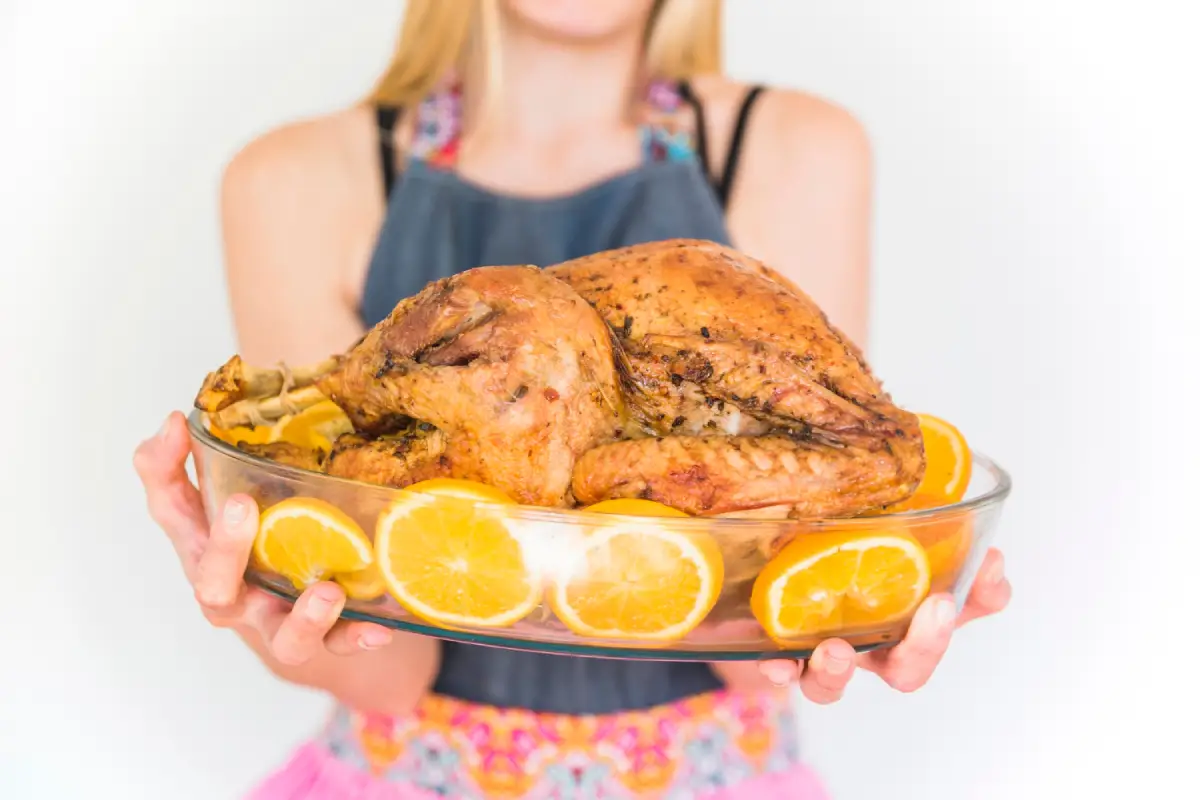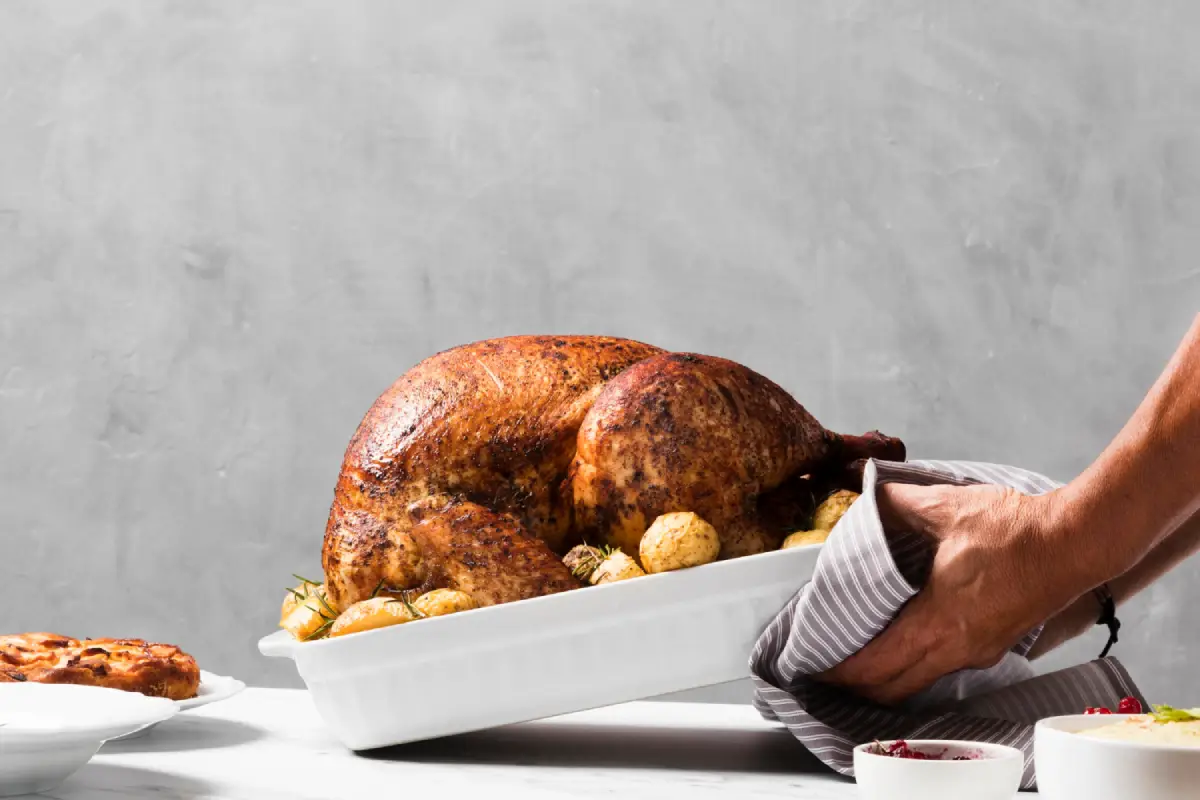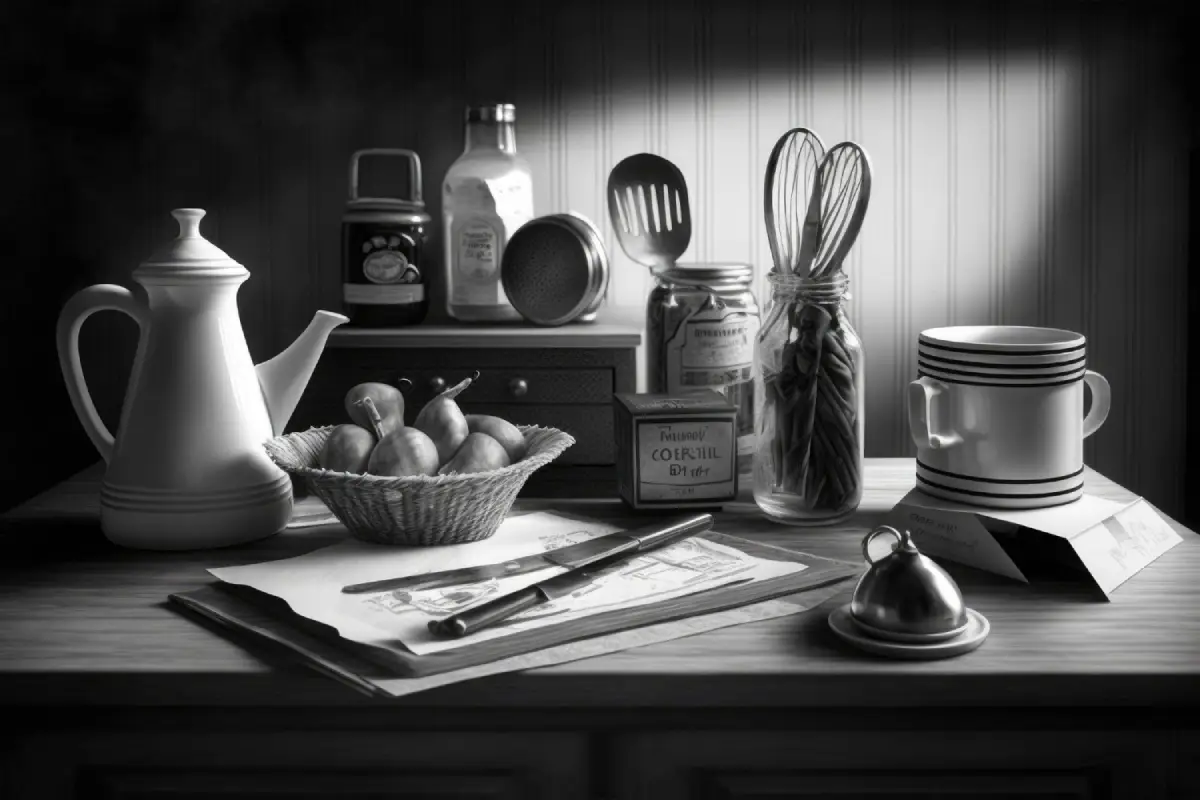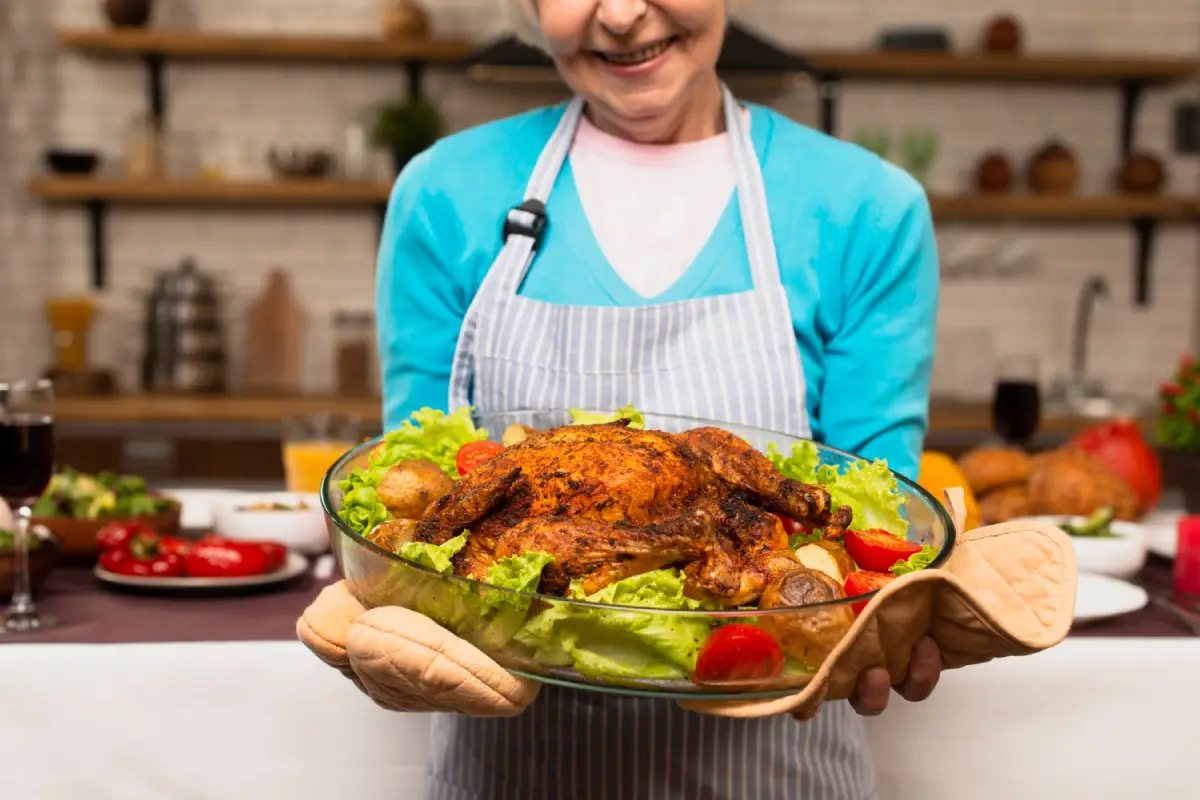Welcome to your culinary journey towards the perfect turkey! Whether a seasoned chef or a first-time cook, mastering the art of basting a turkey is a skill that elevates your cooking. This guide tackles one of the most debated culinary questions: how often should you baste a turkey? We link this discussion to our previous exploration of the ‘turkey baster,’ an essential tool in this art.
Basting a turkey is more than a cooking technique; it’s a ritual that adds flavor and juiciness to your dish. The key question is: how often should you perform this ritual? Is it a transformative step or just a time-honored tradition? We aim to demystify these questions. We will guide you through every step, ensuring your next turkey is not just good, but unforgettable.
So, grab your baster, and let’s embark on this flavorful adventure. We will cover everything from the importance of basting frequency to the best tools and techniques. Get ready to baste your way to a delicious masterpiece!
What is Turkey Basting?
At its core, basting is a simple yet impactful cooking technique. It involves periodically spooning, brushing, or squirting the cooking liquids over the turkey as it roasts. This process not only adds flavor but also helps in evenly cooking the turkey, giving it that desirable golden-brown skin.
So why baste a turkey? Basting helps in two significant ways: it flavors the skin and can aid in even cooking. The basting liquid, often a mix of the turkey’s own juices, fats, and added seasonings, creates a layer of flavor that enhances the overall taste of the turkey. It’s not just about moisture; it’s about infusing the turkey with every ounce of flavor possible.
Now, how does this tie in with the turkey baster, the subject of our parent article? The type of baster you use can significantly affect your basting process. Traditional bulb basters offer precise control and are great for suctioning and releasing juices. Brush-style basters, on the other hand, are perfect for evenly spreading those flavors. Each type has its unique benefits, and understanding them can transform your basting technique.
In this section, we’ve just scratched the surface of turkey basting. As we proceed, we’ll explore the intricacies of this technique, ensuring that you have all the knowledge needed to baste your turkey like a pro.
The Importance of Basting Frequency
Understanding how often to baste a turkey is crucial for achieving that perfect balance of flavor and texture. While opinions vary, a general guideline is to baste every 30 to 40 minutes. However, this frequency can change based on the size of your turkey and the cooking method used.
Why does this frequency matter? Regular basting redistributes the cooking juices, ensuring the turkey cooks evenly while preventing the skin from drying out. But there’s a delicate balance to strike. Over-basting can actually hinder the crisping of the skin, while under-basting might result in less flavorful meat.
It’s not just about the number of times you baste, but also about how you baste. The goal is to cover the turkey thoroughly without letting heat escape from the oven too often. Each time you open the oven door, the temperature drops, which can lead to longer cooking times and potentially uneven cooking.
So, how do you find that sweet spot? It’s about understanding your oven, the size and type of your turkey, and adjusting your basting schedule accordingly. This section has laid the foundation for the crucial role of basting frequency. Next, we’ll explore the tools and techniques that make for effective basting.
Tools and Techniques for Effective Basting
Having the right tools and techniques at your disposal can make a significant difference in your basting process. Let’s explore some of the most effective tools for basting and how to use them for the best results.
Basting Tools:
- Bulb Baster: Ideal for suctioning up the cooking liquids and evenly distributing them over the turkey. Its narrow tip allows for precise application.
- Basting Brush: Perfect for a more controlled application, a basting brush lets you evenly coat the turkey with butter, oils, or marinades.
- Spoon or Ladle: A simple yet effective tool, especially if you prefer a more hands-on approach to basting.
Basting Techniques:
- Consistency is Key: Regardless of the tool, ensure that each baste covers the turkey evenly. This consistent coverage helps in uniform cooking and flavor distribution.
- Temperature Management: When using a bulb baster or spoon, draw up the liquids from the bottom of the pan. These are packed with flavor and are usually hotter, which helps maintain the turkey’s cooking temperature.
- Gentle Application: With a brush, apply the basting liquid gently. The goal is to coat the turkey without disrupting the skin, which is essential for achieving that crispy finish.
Combining Tools and Techniques:
Each tool offers unique benefits. For instance, a bulb baster provides more liquid, which is great for the initial stages of cooking, while a brush is ideal for adding specific flavors or oils in the later stages. Combining these tools based on your cooking stages can yield the best results.
Remember, the type of tool and technique you choose can influence the overall outcome of your basted turkey. Experiment with different tools and find what works best for your recipe and personal preference.
Basting vs. Moisture: Myth and Reality
There are many myths surrounding turkey basting, especially regarding its impact on moisture. Let’s separate fact from fiction to understand what basting can and cannot do for your turkey.
The Myth of Moisture
A popular belief is that basting a turkey makes it moister. However, the reality is a bit more complex. While basting does add flavor to the skin and outer layer of the meat, it doesn’t necessarily make the turkey meat itself moister. The skin of the turkey is relatively impermeable, so the basting liquid doesn’t penetrate deeply into the meat.
The Reality of Flavor
Where basting truly shines is in enhancing the flavor and achieving that coveted golden-brown skin. The juices and fats used in basting contribute to a richer taste and a more appealing appearance. This surface-level flavor enhancement is what makes basting a cherished part of the turkey roasting process.
Tips for Moisture
If your goal is a moister turkey, consider methods like brining or choosing a turkey with a higher fat content. These methods can help retain moisture inside the meat more effectively than basting.
A Balanced Approach
Understanding that basting primarily affects the flavor and appearance of the turkey allows for a more balanced approach. It’s a technique that adds value to the cooking process, but it’s not a miracle worker for moisture. Embrace basting for what it does best: adding a delicious layer of flavor and a beautiful finish to your turkey.
Alternatives to Basting
While basting adds flavor to the turkey’s exterior, there are other methods to ensure the meat stays moist and delicious. Let’s explore some effective alternatives to basting that can enhance the juiciness of your turkey.
- Brining: Soaking the turkey in a saltwater solution (brine) before cooking is an excellent way to ensure moisture throughout the meat. Brining helps the turkey to absorb moisture and flavors, leading to a juicier and more flavorful result.
- Marinating: Applying a marinade to the turkey before cooking infuses it with flavors and can help tenderize the meat. Ingredients like citrus, herbs, and oils in a marinade can add a unique taste profile to your turkey.
- Using a Rub: A dry rub of herbs and spices applied directly to the turkey’s skin can enhance flavor. While it doesn’t directly contribute to moisture, it adds a robust flavor to the outer layer of the meat.
- Covering the Turkey: Covering the turkey with aluminum foil during part of the roasting process can help retain moisture. This method allows the turkey to self-baste in its own juices.
- Choosing a Self-Basting Turkey: Some turkeys come pre-treated with a solution to help them stay moist. These self-basting turkeys can be a convenient option, though they may have a different flavor profile than a turkey you baste or brine yourself.
Each of these methods offers distinct advantages and can be used in conjunction with or as an alternative to traditional basting. Experimenting with these techniques can lead to discovering what works best for your preferred turkey preparation style.
Common Mistakes in Turkey Basting
Basting a turkey seems straightforward, but there are a few pitfalls that can affect the outcome of your dish. Here are some common basting mistakes and how to avoid them:
- Opening the Oven Too Often: Every time you open the oven door to baste, the oven loses heat, which can lead to uneven cooking and longer cooking times. Try to keep oven door openings to a minimum.
- Using Cold Basting Liquid: Basting the turkey with cold liquids can lower the surface temperature of the meat, affecting cooking time and texture. Use warm basting liquids to maintain a consistent cooking temperature.
- Neglecting the Basting Tool’s Cleanliness: Ensure your basting brush or bulb baster is clean. A dirty basting tool can introduce bacteria and affect the flavor of your turkey.
- Over-basting: While it’s important to baste regularly, overdoing it won’t necessarily make your turkey moister but can prevent the skin from crisping. Stick to a balanced basting schedule.
- Forgetting to Rest the Turkey: After cooking, let the turkey rest before carving. This allows the juices to redistribute throughout the meat, resulting in a juicier turkey. Basting during the resting period is unnecessary and can disrupt this process.
By avoiding these common mistakes, you can ensure that your basting technique contributes positively to the flavor and texture of your turkey.
Recipe Tips and Tricks for the Perfect Basted Turkey
Achieving the perfect basted turkey is an art form. Here are some expert tips and tricks to help you elevate your turkey game:
- Choose the Right Turkey: Start with a high-quality turkey. Consider its size, type (organic, free-range, etc.), and whether it’s fresh or frozen, as outlined in Food Network’s Tips for Choosing and Cooking Turkey.
- Prepare Your Turkey Properly: Before basting, ensure your turkey is properly prepared. Pat the skin dry, and if you’re using a brine or rub, give it adequate time to flavor the meat.
- Create a Flavorful Basting Liquid: Experiment with different basting liquids. Mixtures of butter, herbs, and stock can add a depth of flavor. Consider incorporating flavors that complement your turkey’s seasoning.
- Balance Basting Frequency: Follow the general guideline of basting every 30 to 40 minutes, but adjust based on your oven and the turkey’s size. Remember, less frequent basting might be needed for smaller turkeys or certain oven types.
- Use the Right Tools: Depending on your preference and the stage of cooking, switch between a baster and a brush for different effects. A baster is great for overall moisture, while a brush can be used for a more flavorful finish.
- Monitor the Temperature: Monitor the Temperature: Use a meat thermometer to check the turkey’s internal temperature according to the USDA’s Safe Minimum Cooking Temperatures Chart. The breast should reach 165°F (74°C), and the thigh, 175°F (80°C).
- Let it Rest: After cooking, let the turkey rest for at least 20 minutes before carving. This allows the juices to redistribute, making the meat more tender and flavorful.
- Carving Technique: Carve your turkey properly to ensure each slice is juicy and flavorful, as shown in the Epicurious guide to Carving a Turkey. Use a sharp knife and follow the natural structure of the turkey.
By following these tips and tricks, you’re on your way to preparing a basted turkey that’s not just delicious but also a showstopper at any gathering.
FAQs About Turkey Basting
In this section, we’ll answer some frequently asked questions about turkey basting to help clarify any uncertainties you might have.
Is Basting Necessary for Turkey?
Basting is not strictly necessary, but it’s a popular method for adding flavor to the turkey’s skin and creating a beautiful, golden appearance. While it doesn’t significantly moisten the meat itself, it contributes to the overall taste and presentation of the dish.
Does Basting a Turkey Make it Moist?
Basting primarily affects the outer layers of the turkey, adding flavor to the skin rather than moistening the meat. For internal moisture, other methods like brining or using a marinade are more effective.
Should You Baste Turkey While Resting?
It’s not recommended to baste the turkey while it’s resting. Resting allows the juices to redistribute throughout the meat, and basting during this time can disrupt this process and affect the meat’s juiciness.
Should You Baste a Turkey or Leave it Alone?
This depends on your personal preference and cooking style. Basting can add flavor to the skin and enhance the appearance of the turkey. However, if you prioritize a crispier skin or a more straightforward cooking process, you might choose to skip basting.
Great, let’s conclude our article with a summarizing conclusion that encapsulates the key points we’ve discussed and encourages readers to explore further.
Conclusion
As we wrap up our exploration into the art of basting a turkey, it’s clear that while basting might not be the magic key to a moister turkey, it holds a special place in the realm of flavor enhancement and presentation. Whether you choose to baste your turkey or opt for alternative methods like brining or marinating, the journey to a delicious turkey is rich with possibilities.
Remember, the frequency and method of basting, the tools you use, and the way you balance other cooking techniques all contribute to the final outcome. Basting is more than just a cooking step; it’s a tradition for many, adding both flavor and joy to the cooking process.
We encourage you to experiment with the tips and techniques shared in this guide and find what works best for you. Each turkey you prepare is an opportunity to refine your skills and create memorable meals for you and your loved ones.
And don’t forget to check out our detailed guide on ‘turkey basters’ to further enhance your basting technique. Here’s to a flavorful, juicy, and perfectly basted turkey at your next feast!




